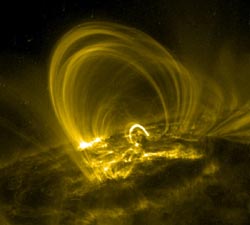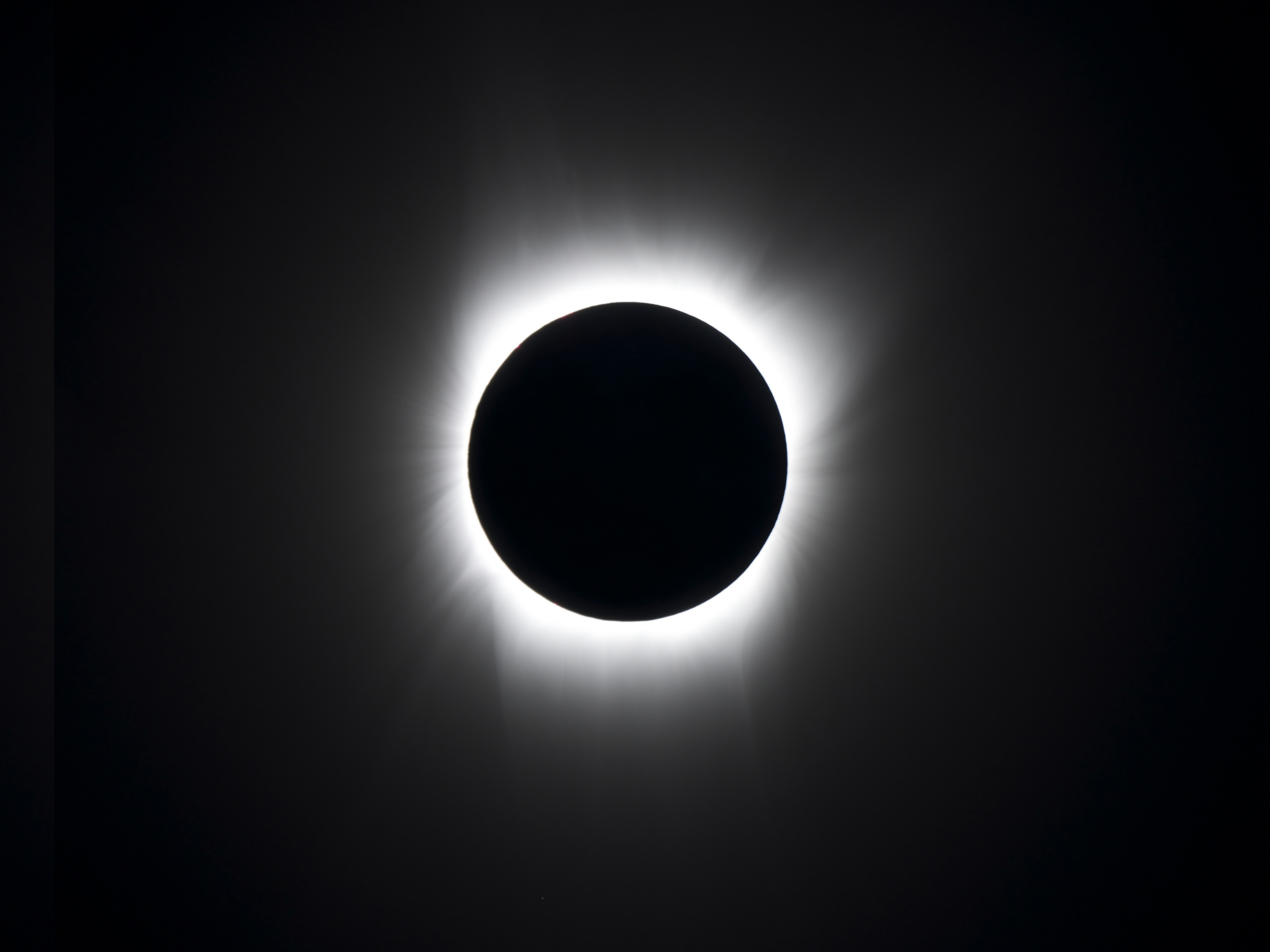

The eclipse begins at the moment the moon first “touches” the edge of the solar disk, approaching it from the right as seen from the Northern Hemisphere. But it’s there, as will become obvious at First Contact. You can’t see the moon as it approaches the Sun, because from Earth we’re seeing its dark side-the New Moon. the chromosphere looks like a red rim around the sun, and the corona forms a white crown with plasma streamers spreading outward. In 2016, we’re midway through the cycle, so the Sun is showing a medium number of sunspots.

The Sun has an eleven-year cycle of sunspot activity.

While you wait for the eclipse to begin, use safe viewing techniques to look for sunspots, slightly cooler areas on the sun (only 4,500 degrees Celsius!) that look dark compared to the blinding photosphere. The visible region of the Sun is called the photosphere.
#Gas of sun corona full#
Use safe viewing techniques to preserve your eyesight.īefore the eclipse begins, and after it ends, the full disk of the Sun burns in the sky. “Perhaps, with a better understanding of its basic physics, we will be able to build better models to predict space weather in the future, thus allowing the implementation of protection strategies that could head off - literally - billions of dollars of damage.Remember: NEVER view any stage except totality with your naked eyes. One of the abiding mysteries surrounding our Sun is understanding how the corona gets. “The solar corona’s dynamics can have profound impacts on Earth,” he said in a statement. This swirling gas may be the result of intense magnetic fields and may explain why the Suns corona is so hot. The researchers then tested the hypothesis using six-dimensional computer simulations and found the magnetic field structures and coronal gas eddies generated hewed close to observations of the actual solar corona made by Nasa’s Parker Solar Probe spacecraft, which first flew through the Sun’s corona in December.Īnd beyond gaining a better understanding of solar coronal physics for its own sake, said study co-author Dr Romain Meyrand, scientists will better understand and be able to predict space weather events that can affect spacecraft near Earth. A hot trail to explain this effect leads to a region. Through a phenomenon they call the helicity barrier, they theorize that the low-frequency turbulence process diverts electrons’ energy into the creation of ion-cyclotron waves, which then heat the ions. 3, 2022 Why the suns corona reaches temperatures of several million degrees Celsius is one of the great mysteries of solar physics. But they don’t fit observations that ions - the cores of hydrogen, helium and oxygen atoms stripped of their electrons - become superheated while electrons remain relatively cool in the corona.Ī hypothesis involving a sort of magnetic wave known as high-frequency ion-cyclotron waves can explain the differential heating between ions and electrons, but scientists haven’t found a clear source for such waves.īut in the new paper, Dr Squire and his colleagues argue that both turbulent and magnetic waves are two components of a larger, unified process of coronal heating. Hypotheses involving a form of turbulence known as low-frequency “Alfvénic” turbulence are supported by observations by spacecraft and would explain the transportation of energy outwards from the Sun. “Astrophysicists have several different ideas about how the magnetic-field energy could be converted into heat to explain the heating, but most have difficulty explaining some aspect of observations.” “We know from measurements and theory that the sudden temperature jump is related to magnetic fields which thread out of the Sun’s surface,” the lead author of the study, Jonathan Squire, said in a statement. The Suns outer atmosphere, which is heated by the magnetic field to millions of. Temperatures in the corona regularly measure more than 1 million degrees Celsius, and scientists believe that the process that generates this intense heat so far from the Sun’s core may govern how powerfully the solar wind flows from the Sun. An eruption of hot gas that can extend thousands of miles into space. The first mechanism is heating from the solar interior carried to the surface by waves in the hot gas. The Sun’s surface is relatively temperate compared with the Sun’s upper atmosphere, or corona, the wispy tendrils of plasma seen around the edge of the Moon during a total eclipse and ranging from a few hundred kilometers to five million kilometers above the surface. The mechanisms that heat the corona are poorly understood, but are thought to be of two kinds. Even if the temperature in the core of the Sun does reach 15 million degrees, it drops to a mere 5000 degrees at the surface. As the outer edge of a massive ball of gas superheated by thermonuclear reactions fusing hydrogen atoms into helium atoms, the surface of the Sun is extremely hot – a blistering 6,000 degrees Celsius. The problem is, no one can really explain how this corona exists.


 0 kommentar(er)
0 kommentar(er)
